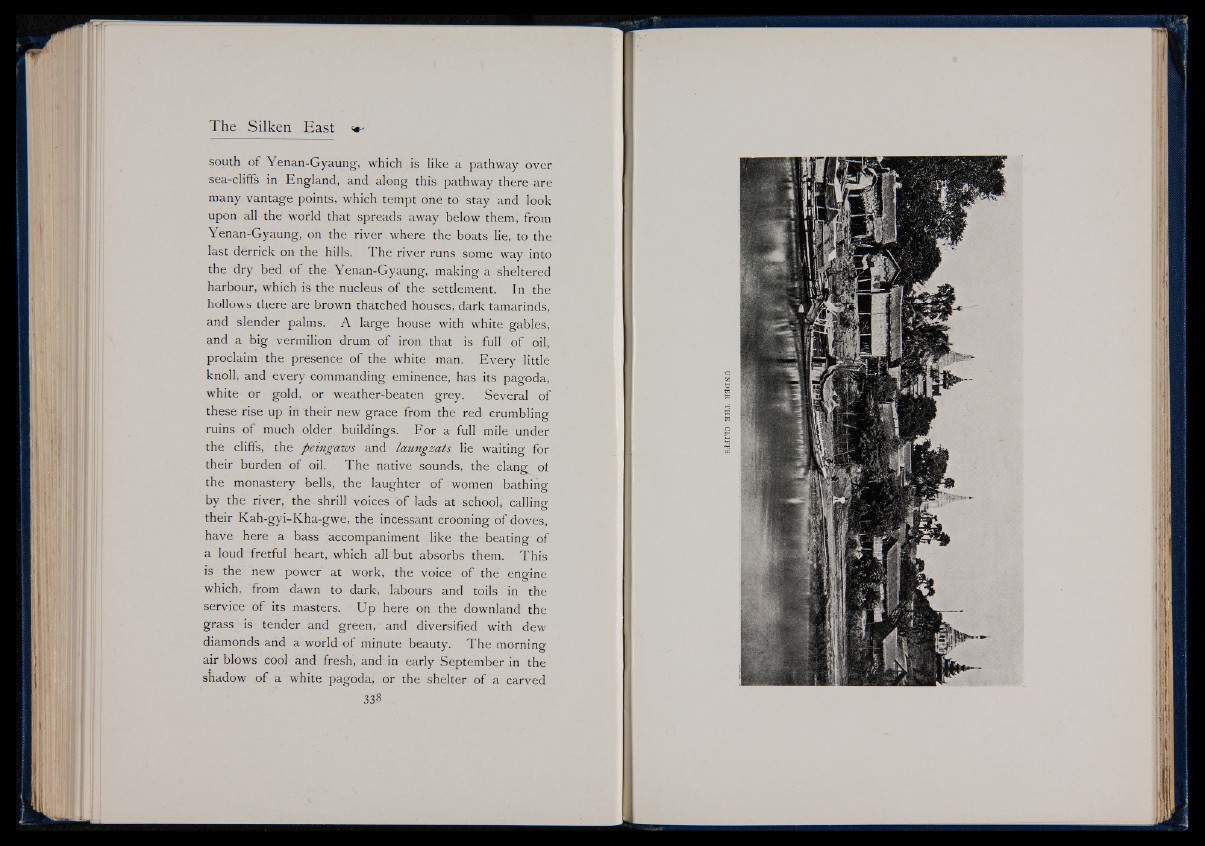
south of Yenan-Gyaung, which is like a pathway over
sea-clifis in England, and along this, pathway there are
many vantage points, which tempt one to stay and look
upon all the world that spreads away below them, from
Yenan-Gyaung, oh the river where the boats lie, to the
last derrick on the hills. The river runs some way into
the dry bed of the Yenan-Gyaung, making a sheltered
harbour, which is the nucleus of the settlement. In the
hollows there are brown thatched houses, dark tamarinds,
and slender palms. A large house with white gables,
and a big vermilion drum of iron that is full of oil,
proclaim the presence of the white man. Every little
knoll, and every commanding eminence, has its pagoda,
white or gold, or weather-beaten grey. Several of
these rise up in their new grace from the red crumbling
ruins of much older buildings. For a full mile under
the cliffs, the peingaws and laungzats lie waiting for
their burden of oil. The native sounds, the clangs of
the monastery bells, the laughter of women bathing
by the river, the shrill voices of lads at school, calling
their Kah-gyi-Kha-gwe, the incessant crooning of doves,
have here a bass accompaniment like the beating of
a loud fretful heart, which all but absorbs them. This
is the new power at work, the voice of the engine
which, from dawn to dark-, labours and toils in the
service of its masters. Up here on the downland the
grass is tender and green,' and diversified with dew
diamonds and a world of minute beauty. The morning
air blows cool and fresh, and in early September in the
shadow o f a white pagoda, or the shelter of a carved
UNDER THE C U F F S